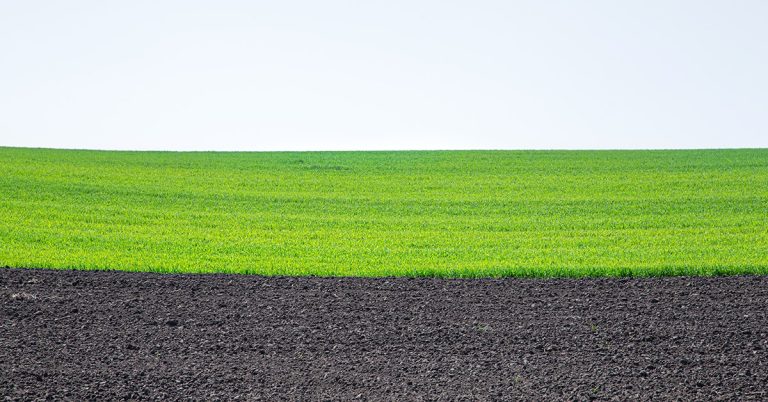With climate change being an ever-increasing threat to our planet, the need to invest in climate change mitigation and environmental preservation strategies has never been more important. The push towards carbon neutrality has been gaining momentum, and companies that prioritize environmentally responsible practices are becoming increasingly attractive to investors. One promising strategy is Enhanced Rock Weathering (ERW), which has the potential to sequester carbon from the atmosphere by increasing soil carbon storage. Learn more about the mechanisms and potential of ERW in promoting soil carbon sequestration!
How does Enhanced Rock Weathering works?
With the growing concern of climate change, new and innovative technologies are being developed to combat its effects. Carbon capture and sequestration are two of the primary methods being employed by companies worldwide to reduce carbon emissions.
One such technology that is gaining popularity is Enhanced Rock Weathering (ERW), which promotes soil carbon sequestration. But how exactly does it works?
ERW involves applying crushed rocks and minerals, such as glauconite or limestone, to the soil surface to increase the rate of mineral weathering. As the rock particles dissolve over time, they release minerals, including calcium, magnesium, and silica.
These minerals can then react with atmospheric carbon dioxide (CO2), forming solid carbonates which are stable and have a long residence time in the soil. Soil carbon sequestration is important because by storing carbon in the soil, it prevents it from being released into the atmosphere where it contributes to climate change.
ERW can be a solution to removing carbon from the atmosphere while providing positive benefits to soil health and crop production.
A study conducted by the University of Sheffield suggests that with increased ERW, significant amounts of CO2 could be sequestered each year. They estimate that using just 1% of global croplands for ERW could sequester up to 1 billion tonnes of CO2 each year. This is equivalent to removing approximately 25% of global annual CO2 emissions from fossil fuel combustion.
Furthermore, the addition of crushed rocks to soil can improve its fertility, increasing crop yields and making food production more efficient. But there’s even more potential benefits that ERW brings to a variety of areas.
ERW can bring potential benefits to a variety of areas
Enhanced Rock Weathering can be benefitial to the environment and agriculture. According to studies, ERW can potentially increase soil carbon sequestration by 1-2 gigatons annually. By applying ground rock to agricultural lands, the process increases soil carbon sequestration potential while also enhancing soil nutrients, crop productivity, and soil structure.
This makes ERW an economically viable solution for commercial crop production that also benefits the environment.
Research also has shown that ERW’s potential long-term benefits have been observed in vineyards and forests. For example, in a research study conducted in Spain, the application of ground rocks increased vineyard yield and quality while reducing fertilizers’ need and significantly improving soil pH and organic matter.
Similarly, in a study conducted in Hawaii on the application of volcanic rock dust in a forest ecosystem, vegetation biomass increased, and soil carbon sequestration improved significantly.
Enhanced Rock Weathering has also been shown to have additional environmental benefits. The use of ERW can increase soil pH, making the soil more alkaline. This can reduce the concentration of potentially harmful elements in soil, such as aluminum and manganese. Furthermore, the alkaline soil can increase the amount of nutrients available for plant growth. This benefits the crops, leading to increased yields.
Nevertheless, ERW also has its challenges. One of the challenges associated with ERW is the economic cost. The cost of mining, crushing, and transporting rocks can be expensive. However, a possible solution is to use waste materials, such as construction waste, as a source of crushed rock. This would not only reduce costs but also minimize landfill waste.
Another way to get aaround this challenge is to invest in research of more appropriate raw material that can be used in Enhanced Rock Weathering.
Morevover, researchers are also exploring the potential to combine ERW with other carbon sequestration strategies, such as biochar production or afforestation, to maximize the benefits of soil carbon sequestration.
Enhanced Rock Weathring is a powerful tool to help mitigate climate change and increase crop yields, and investments are necessary to develop it even further
In conclusion, Enhanced Rock Weathering (ERW) has the potential to sequester significant amounts of carbon from the atmosphere while improving soil health and increasing crop yields.
By increasing mineral weathering in soils, ERW can increase the amount of carbon storage in the soil for the long term. ERW is a promising solution to mitigating climate change and should be considered by companies looking to invest in carbon capture and climate change mitigation strategies.
Further research is needed to determine optimal Enhanced Rock Weathering conditions, including the most effective crushed rock type, application rate, and its impact on soil health. However, ERW remains a promising strategy in the mitigation of global climate change.

